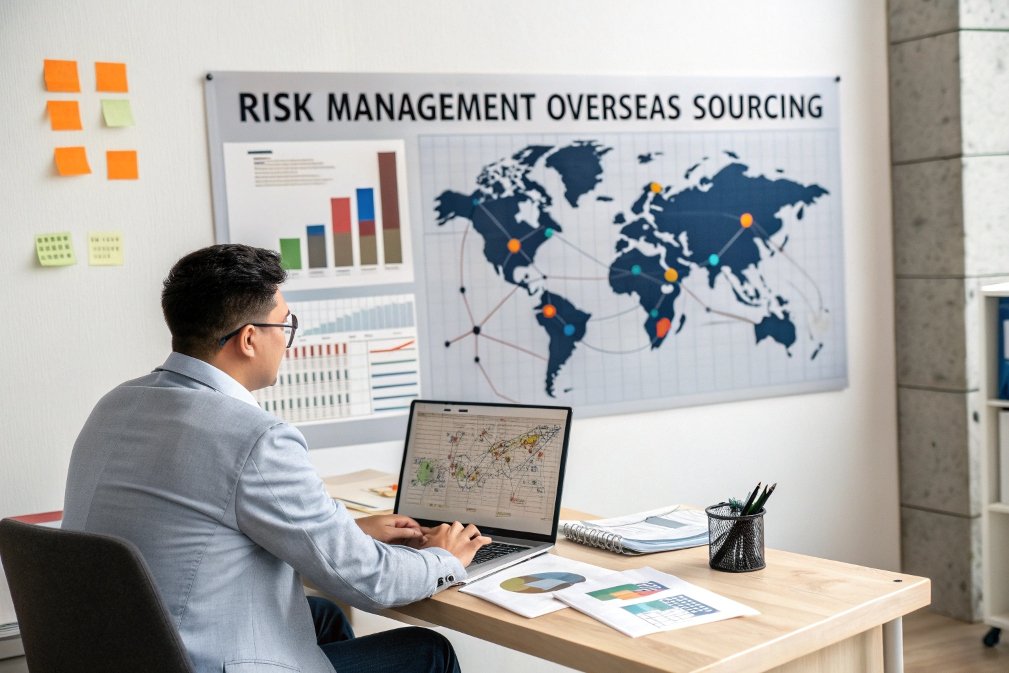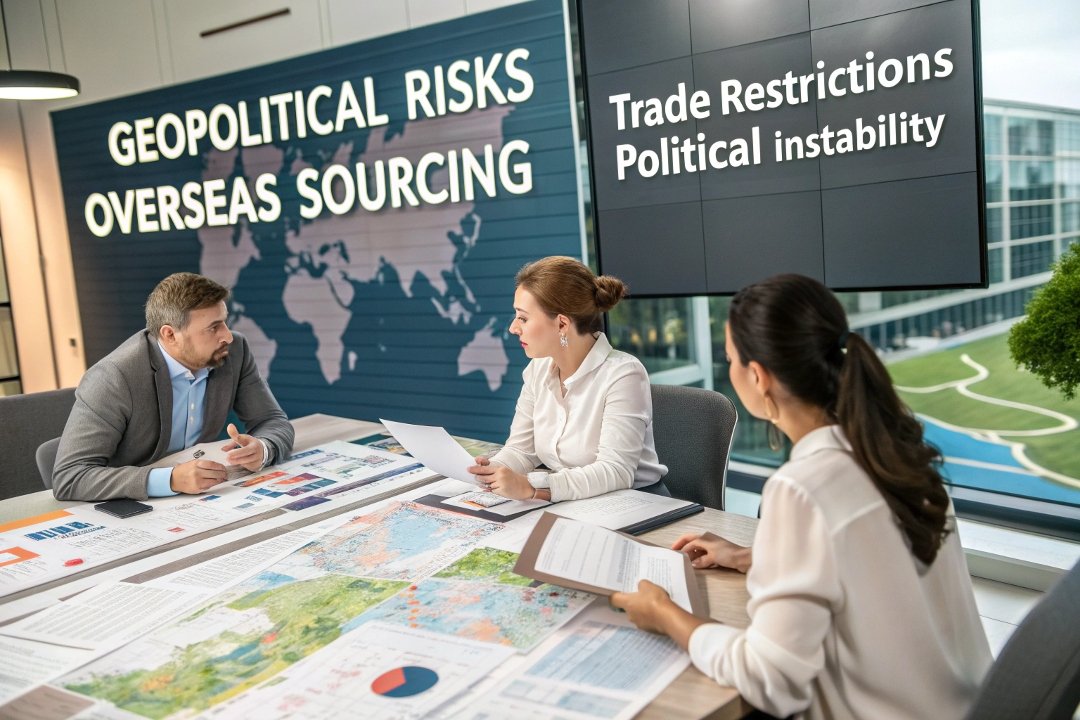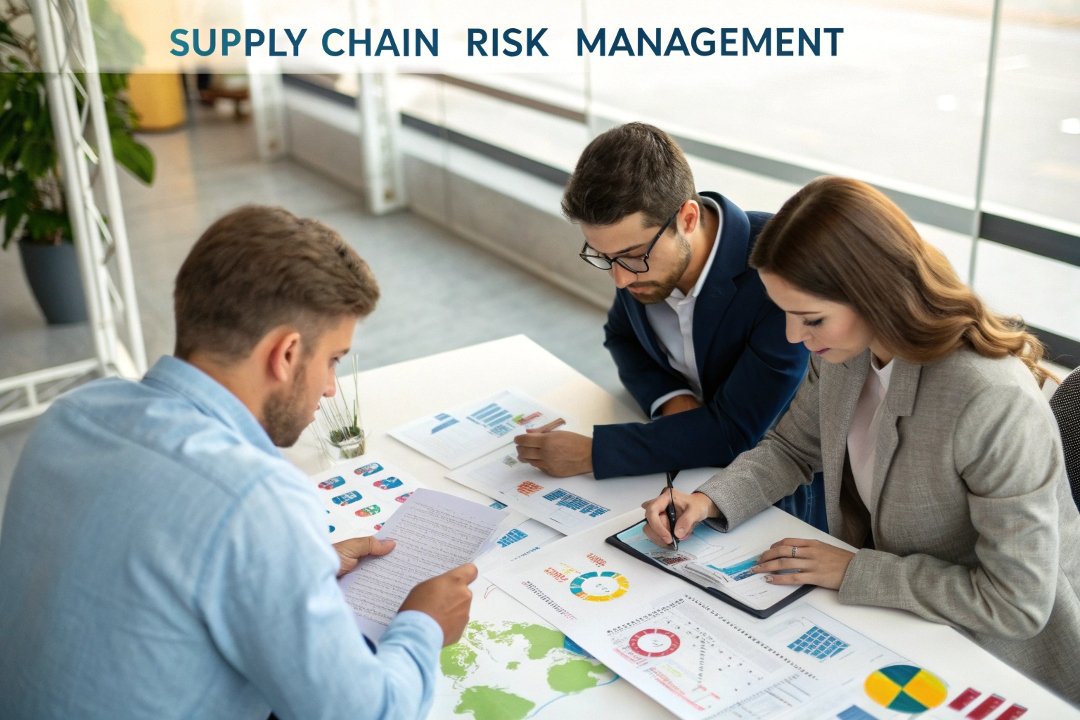
Sourcing custom parts from overseas can offer significant cost advantages and access to specialized expertise. However, it also introduces a range of risks that can disrupt the supply chain and impact production timelines. By identifying these risks and implementing a robust risk management strategy, you can ensure smooth and reliable sourcing. In this article, we’ll discuss the key risks of overseas sourcing and how you can mitigate them to protect your business.
Managing supply chain risks when sourcing custom parts from overseas requires proactive planning and continuous monitoring to ensure the timely and cost-effective delivery of high-quality parts.
We will explore the key risks involved, how to create a solid risk management plan, and why staying in close communication with overseas suppliers is essential.
What Are the Key Risks When Sourcing Custom Parts from Overseas?

The key risks when sourcing custom parts from overseas include supply chain disruptions1, language barriers, quality control issues2, and geopolitical factors. These risks can affect production schedules, increase costs, and compromise part quality.
When sourcing custom parts from overseas3, companies face several challenges that can disrupt the supply chain. The following are some of the most common risks:
1. Supply Chain Disruptions
One of the most significant risks is the potential for disruptions in the supply chain. These disruptions can be caused by factors such as:
- Shipping delays due to port congestion, bad weather, or customs issues
- Natural disasters affecting production or transportation
- Unexpected factory shutdowns due to labor strikes or government regulations
Even minor disruptions can have a ripple effect, causing delays that affect the entire production schedule. If a part delivery is delayed, it can set back your project timeline and impact other areas of the supply chain.
2. Quality Control Issues
When sourcing parts from overseas, it can be difficult to maintain consistent quality. Quality control problems may arise due to:
- Differences in manufacturing standards across countries
- Lack of direct oversight of production processes
- Language barriers that lead to misunderstandings in quality specifications
The risks associated with quality control can be minimized by selecting suppliers with strong quality management systems and conducting thorough audits.
3. Geopolitical and Regulatory Risks
Geopolitical instability, changes in trade policies, and regulatory shifts can also impact your overseas sourcing strategy. For example:
- Tariffs and trade restrictions may suddenly increase costs or limit access to certain suppliers
- Changes in labor laws can alter production costs or schedules
- Economic instability may result in suppliers being unable to meet their commitments
Understanding the political climate and regulatory environment in the supplier’s country is crucial to assessing and managing these risks.
4. Cultural and Communication Barriers
Working with suppliers from different countries often involves dealing with cultural and language differences. These can create misunderstandings regarding:
- Product specifications and requirements
- Timelines and delivery expectations
- Payment terms and contract clauses
Effective communication is key to reducing these risks, as it helps ensure that both parties are aligned and understand expectations.
| Risk Category | Key Risks | Mitigation Strategies |
|---|---|---|
| Supply Chain Disruptions | Shipping delays, natural disasters, factory shutdowns | Diversify suppliers, maintain safety stock, use reliable logistics partners |
| Quality Control Issues | Inconsistent product quality, lack of direct oversight | Select suppliers with strong quality systems, conduct factory audits |
| Geopolitical Risks | Tariffs, trade restrictions, economic instability | Stay updated on global trends, evaluate political stability |
| Cultural and Communication Barriers | Misunderstandings of specifications, timelines, terms | Maintain clear, frequent communication, use translators if necessary |
How Can You Create a Robust Supply Chain Risk Management Plan?

Creating a robust supply chain risk management plan involves identifying potential risks, evaluating their impact, and implementing strategies to minimize or mitigate them. A proactive approach is essential to maintaining a reliable supply chain.
A well-structured risk management plan will help your business identify risks early and take preventive measures to avoid disruptions. Here’s how you can build such a plan:
1. Risk Identification
Start by identifying all potential risks in your overseas supply chain. This includes both common risks, like shipping delays, and more specific risks related to your suppliers or the regions they are located in. To identify risks, consider:
- Past performance of suppliers: Have they experienced delays or quality issues in the past?
- Geographic location: Is the supplier located in an area prone to natural disasters or political instability?
- Industry trends: Are there any emerging risks in the industry that could affect your supply chain?
2. Risk Assessment
Once you’ve identified potential risks, assess their likelihood and impact on your supply chain. This will help you prioritize which risks to address first. Consider:
- Likelihood: How likely is the risk to occur?
- Impact: How severe would the impact be if the risk occurred? Would it lead to delays, increased costs, or loss of business?
For each identified risk, categorize it by its likelihood and impact to determine its priority level.
3. Mitigation Strategies
Develop strategies to mitigate or reduce the impact of each risk. Common risk management strategies include:
- Diversification: Don’t rely on a single supplier or transportation route. Diversify your supply chain to ensure that if one source is affected, others can step in.
- Safety Stock: Keep a buffer of inventory on hand to protect against unexpected delays.
- Contingency Planning: Have contingency plans in place for unforeseen events, such as natural disasters, strikes, or regulatory changes.
4. Monitoring and Reporting
Establish a system for regularly monitoring and reporting on supply chain risks. This will help you track potential issues before they become major disruptions. Key actions to consider include:
- Regular supplier audits: Ensure suppliers are adhering to agreed-upon processes and quality standards.
- Risk reporting tools: Use tools and dashboards to track risks and receive real-time updates on supply chain performance.
| Risk Management Strategy | Key Actions | Benefits |
|---|---|---|
| Risk Identification | Evaluate historical data, geographical risks, and emerging trends | Helps you proactively address potential issues |
| Risk Assessment | Categorize risks based on likelihood and impact | Prioritizes risks for focused action |
| Mitigation Strategies | Diversify suppliers, maintain safety stock, create contingency plans | Reduces potential disruptions and delays |
| Monitoring and Reporting | Use tools to track risks and conduct supplier audits | Ensures ongoing risk management and quick response to issues |
Why Should You Maintain Close Communication with Overseas Suppliers?

Maintaining close communication with overseas suppliers is crucial for managing risks and ensuring the timely delivery of quality parts. Clear, consistent communication helps prevent misunderstandings and fosters stronger supplier relationships.
Building a strong communication framework with your overseas suppliers is one of the most effective ways to minimize risks. Here’s why it’s so important:
1. Prevents Misunderstandings
Overseas sourcing often involves working with suppliers who speak different languages and have different cultural practices. Misunderstandings can arise regarding:
- Product specifications
- Delivery schedules
- Payment terms
Regular communication ensures that both parties are on the same page, reducing the chances of errors that could lead to production delays or quality issues.
2. Provides Early Warning of Problems
By maintaining close contact with your suppliers, you can quickly identify any potential problems. Whether it’s a delay in production or a shortage of materials, staying in the loop allows you to address issues before they escalate.
- Are there any production delays?
- Has there been a change in lead times?
- Is there a risk of supply shortages?
Early communication helps you adjust your plans and minimize the impact of any issues.
3. Improves Supplier Performance
Effective communication also strengthens the relationship between you and your supplier. When suppliers know they are expected to provide regular updates and maintain open channels of communication, they are more likely to deliver quality parts on time.
- Do they provide regular progress updates?
- Are they responsive to inquiries and concerns?
By fostering good communication, you create a more transparent and collaborative relationship with your suppliers, leading to better overall performance.
| Communication Benefit | Key Actions | Benefits |
|---|---|---|
| Prevents Misunderstandings | Regular check-ins and updates with suppliers | Reduces errors, ensuring alignment on expectations |
| Provides Early Warning | Maintain open channels to receive immediate feedback on potential issues | Allows for quicker response to disruptions |
| Improves Supplier Performance | Foster open and transparent communication | Strengthens the supplier relationship, ensuring better service and product quality |
Conclusion
Managing supply chain risks when sourcing custom parts from overseas requires careful planning, proactive risk management, and clear communication with suppliers. By identifying potential risks early, developing robust mitigation strategies, and maintaining close communication, you can minimize disruptions and ensure a smooth supply chain that delivers quality parts on time.
Exploring strategies to mitigate disruptions can enhance your supply chain resilience and efficiency. ↩
Learning about quality control strategies can help ensure the reliability and consistency of your sourced parts. ↩
Understanding the benefits and risks can help you make informed decisions about overseas sourcing. ↩

